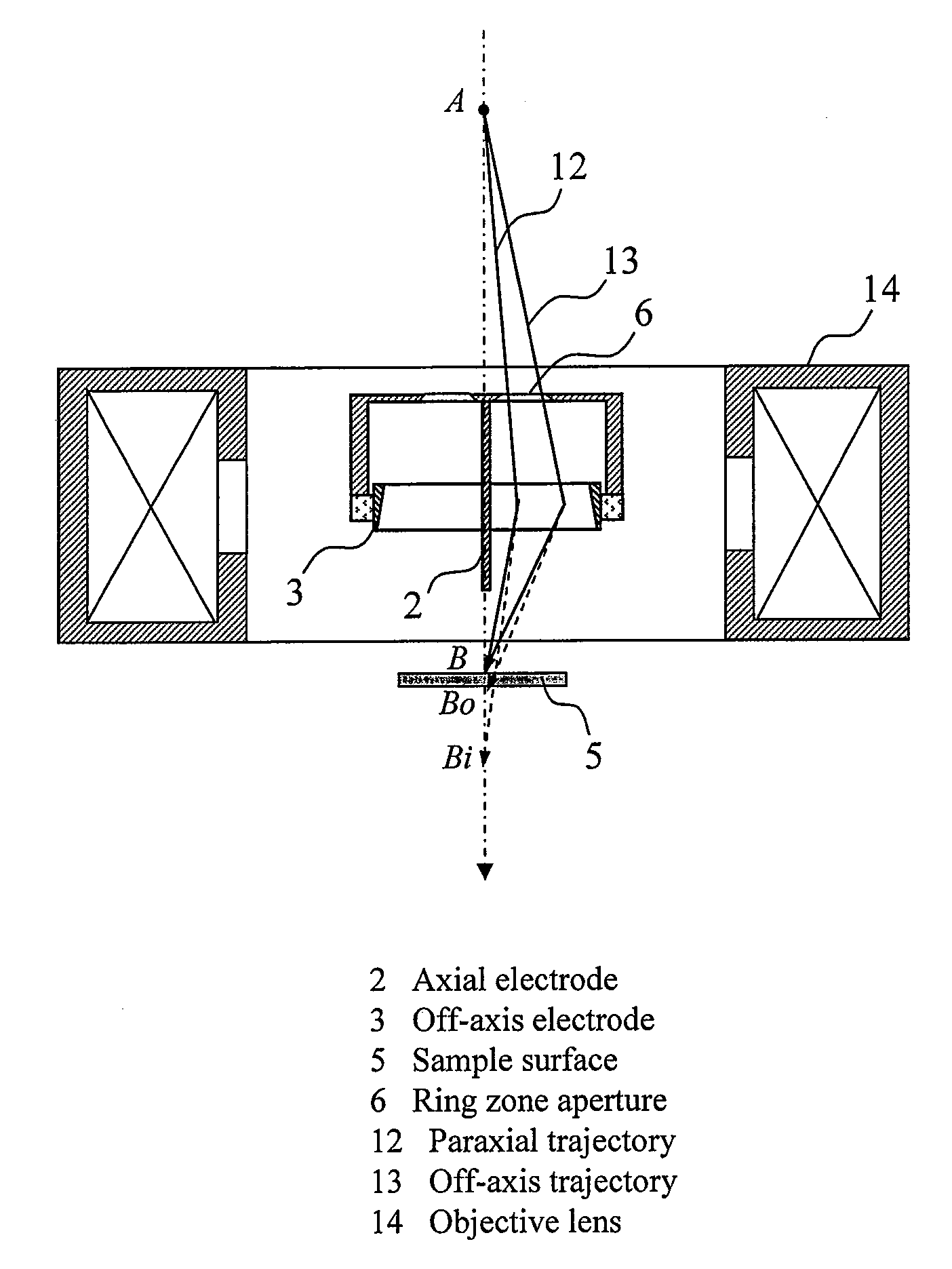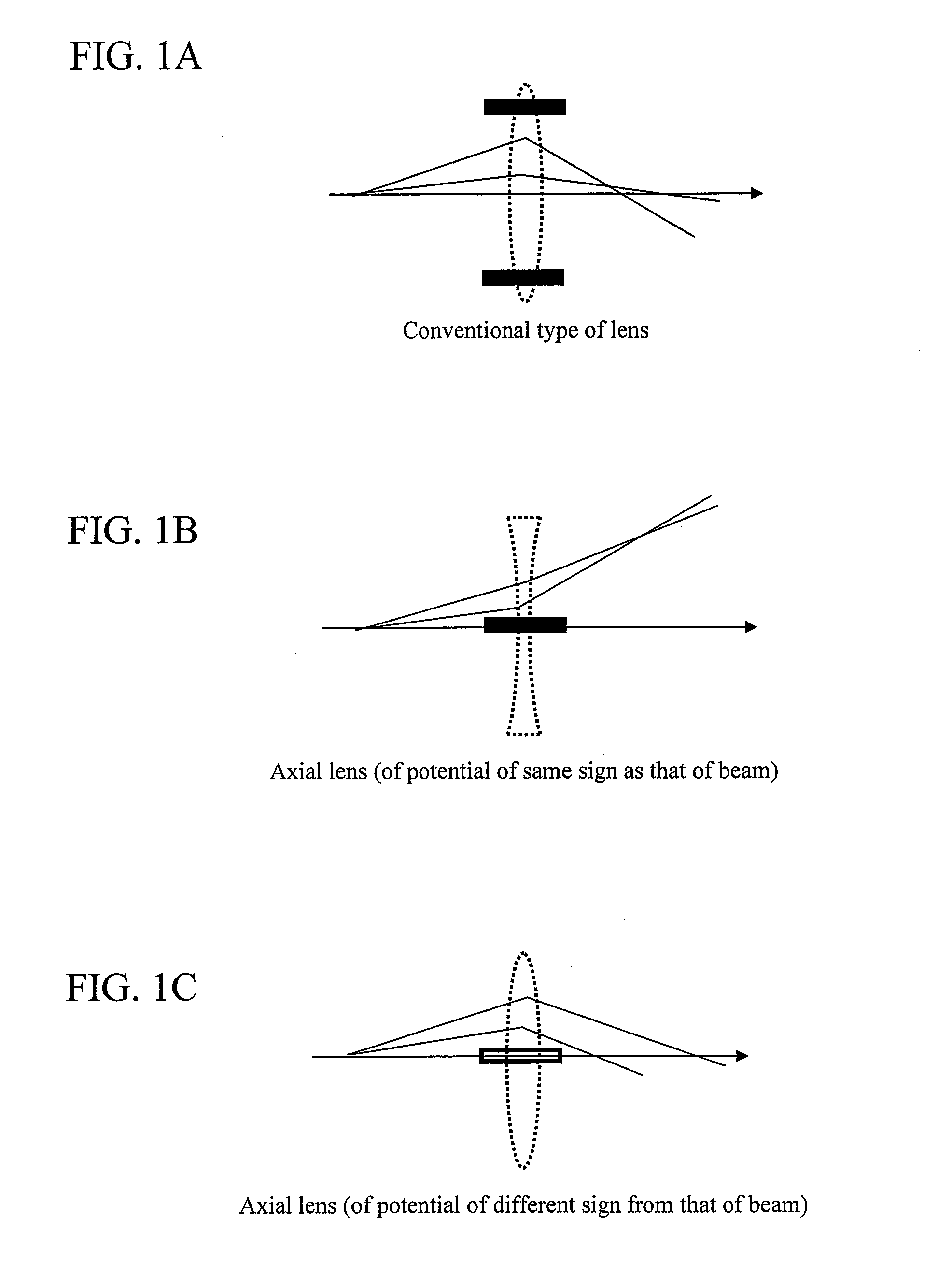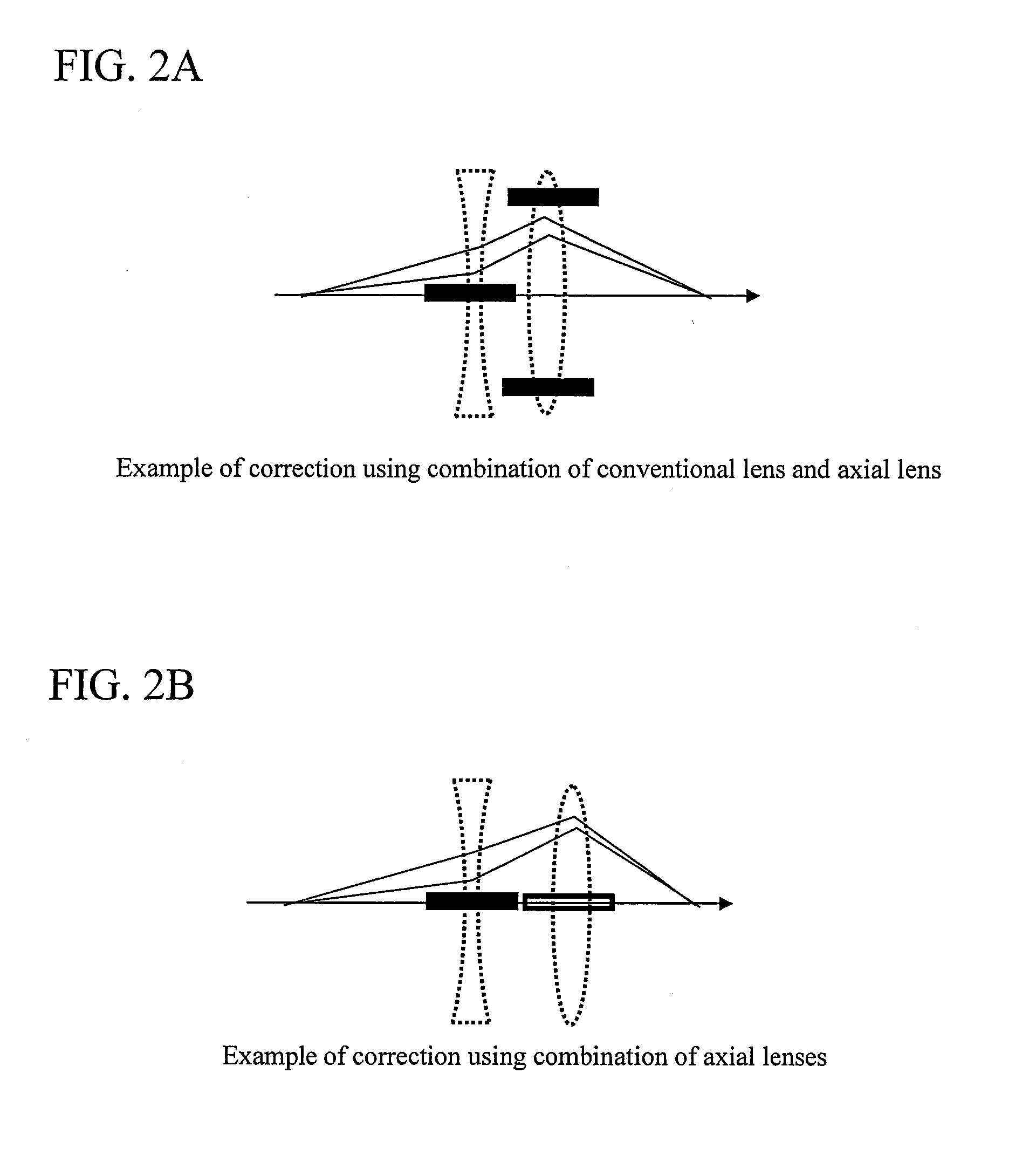Charged Particle Beam Orbit Corrector and Charged Particle Beam Apparatus
a charge beam and orbit corrector technology, applied in the field of orbit correction apparatus for a charged particle beam optical system, and a charge particle beam apparatus, can solve the problems of insufficient increase of current acquired, large drawback of method, and great technical difficulty or cost disadvantage, and achieve the effect of low cost, high degree of general versatility, and compact structur
- Summary
- Abstract
- Description
- Claims
- Application Information
AI Technical Summary
Benefits of technology
Problems solved by technology
Method used
Image
Examples
Embodiment Construction
[0040]Embodiments of the present invention will be described below. Although description will hereinafter be given with regard to an instance where an electron is used as a charged particle, a corrector of the present invention may be applied to an instance where an ion is used as the charged particle.
[0041]FIGS. 6A and 6B and FIGS. 7A and 7B show examples of electric field type correctors having axial electrodes formed of a needle electrode type and a point electrode type, respectively.
[0042]FIGS. 6A and 6B are views showing an example of the prior-art electric field type corrector having the axial electrode in needle form. FIG. 6A is a plan view, and FIG. 6B is a cross-sectional view taken along the line B-B of FIG. 6A. In the example of the prior-art electric field type corrector, an axial electrode 2 is disposed as suspended by a support 7 along the central axis of an off-axis electrode 3. The off-axis electrode 3 is externally fixed by the support 7, and a voltage Vout can be a...
PUM
 Login to View More
Login to View More Abstract
Description
Claims
Application Information
 Login to View More
Login to View More - R&D
- Intellectual Property
- Life Sciences
- Materials
- Tech Scout
- Unparalleled Data Quality
- Higher Quality Content
- 60% Fewer Hallucinations
Browse by: Latest US Patents, China's latest patents, Technical Efficacy Thesaurus, Application Domain, Technology Topic, Popular Technical Reports.
© 2025 PatSnap. All rights reserved.Legal|Privacy policy|Modern Slavery Act Transparency Statement|Sitemap|About US| Contact US: help@patsnap.com



